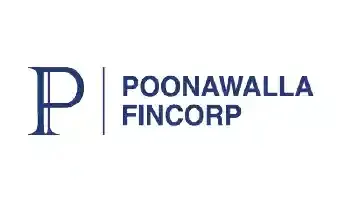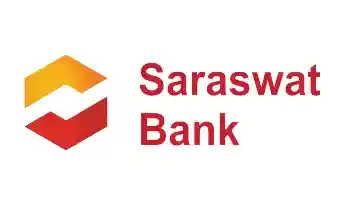Get instant loan offer suitable to your profile !


On this Page:
Discover educational loan options for undergraduate and diploma studies in Canada—no collateral required. Start your study abroad journey today!
Indian students constitute a significant chunk of Canada’s international education sector. Since 2014, this segment has seen approximately 400% increase. Arguably, one reason for this is the diverse range of courses Canada has to offer. Besides the regular bachelor’s and master’s degrees, there is a plethora of UG Diploma Courses in Canada. These are certificates and diploma courses that last one to three years and offer reasonable employment opportunities.
When compared to the US or UK, the cost of studying in Canada is slightly less. Even the top colleges in Canada are 30% to 40% less expensive than those of the USA. Typically, the tuition for an undergraduate degree in Canada lies somewhere between CAD 10,000 to 15,000 annually.
To give you a more precise picture, listed below are the top four colleges in Canada for UG-diploma courses and their approximate yearly tuition.




Barring fees, one more expense that international students bear is the cost of living which comes to be around CAD 10000-17000 per year (varies from place to place).

While pursuing an undergraduate diploma course in Canada is comparatively a cheaper affair, the cost is still considerable. This necessitates the need for financial aid for international students to fund their higher education in Canada. And an education loan happens to be one of the most viable financial aids.
Broadly, there are two types of education loans – with collateral and without collateral. Private banks, public banks, and NBFCs (non-banking financial corporations) offer these loans. Different banks and NBFCs provide varying loan amounts necessitating specific requirements and documents.
A few options for education loans in Canada for International Students for UG Diploma are given below along with key elements such as amount, interest rate, processing fees, etc.

An unsecured loan or education loan without collateral is one that doesn’t require a student to pledge a property or any other financial asset. The approval of the loan is dependent on the credit history and income of the co-applicant.
However, no Indian lender provides an unsecured educational loan for UG Diploma in Canada to international students for more than INR 7.5 lakhs.

An educational loan with collateral sanctions has a higher amount range when compared to an unsecured one. Moreover, these offer a lower interest rate. A collateral is a personal asset that the applicant submits to the bank or NBFC. It acts as an assurance and proves that the student will repay the loan within the specified time.
When it comes to an educational loan for the UG Diploma Course in Canada, secured loans or loans with collateral seem to be the only viable option left for students.
This is mainly because, as we have seen above, no lender offers an unsecured education loan for more than INR 7.5 lakhs, which too is an inadequate amount to finance a UG Diploma education in Canada, and will not help you with your expenses.
If in case one is unable to pledge a property or asset as collateral for the loan, one could even consider pledging third-party security, that is, an asset owned by a third party.
Students can, therefore, have a look at the multiple secured loan options available for UG Diploma in Canada given below and their important features.
| Example Lenders | BOB Bank | Axis Bank | Avanse |
|---|---|---|---|
|
Loan Amount (INR) |
Up to INR 60 lacs |
Up to INR 60 Lakhs |
Up to INR 60 Lakhs |
|
Interest Rate Range |
10.45% |
11.5%-13.5% |
12.4%-14% |
|
Processing Fees |
INR 11800 |
0 below INR 20 lacs and INR.750 above INR 20 lacs |
1% - 2% |
|
Payment During Study Period |
None |
Simple Interest |
Interest as well as the principal amount |




However, students who apply for a loan with our help have 50% more chances of getting the loan approved as compared to those directly approaching the bank. Our experienced counsellor meticulously analyzes your profile, suggests solutions and then selects and coordinates with that lender first that is most likely to sanction the loan.

To be eligible for an education loan to study in Canada, you must meet the following criteria:








When it comes to the UG Diploma in Canada, it has been observed quite a few times that private banks and NBFCs decline even the with-collateral education loans for UG Diploma in Canada. However, you can safely place your bets on Bank of Baroda which has a higher rate of sanction when it comes to secured loans for UG Diploma courses in Canada. Nevertheless, we suggest that you get in touch with GyanDhan first for loans from BoB to increase the probability of loan approval.

The typical documents for study loans for Canada are mentioned below. Please note that the requirements differ for each bank. If you have a specific bank in mind, get in touch with us. GyanDhan provides you with a customized documents list which ensures that you submit all the requisite documents at one go, thus expediting your loan approval process.












The student visa application for Canada requires the purchase of CAD 10,000 Guaranteed Investment Certificate (GIC), because the Guaranteed Investment Certificate costs a lot, you will need to apply for the education loan and get it disbursed even before the visa.
But this is a task which is easier said than done. Although banks do have policies which approve the pre-VISA disbursal of loans, getting it done in reality is extremely difficult and, in some cases, impossible. Bank officials are generally reluctant to disburse loans before VISA and therefore reject such requests. If you are stuck in such a situation or are a potential loan applicant who would like to avoid this scenario, don’t worry! GyanDhan helps students to get these issues resolved too.
We not only help you get a pre-VISA disbursal but also finish the process of pre-visa disbursal in just a couple of days which would otherwise take you 7-8 more days if you were to approach the bank directly.
Besides, below are the basic steps involved in the loan application process:



If you reside in a metropolitan city and have applied to a nationalized bank for the education loan, GyanDhan’s relationship officer will pick up the documents from your home for free, however, for other cities, we will set an appointment with the branch manager of the bank and coordinate.
In the case of private banks, our banking partner will pick up the documents from your home, or you can courier it to the sales manager appointed by us.
If you take an education loan from NBFC, you just have to upload the documents on our website. There is no need to submit any hard copy.



Applying for an education loan is a time-consuming and cumbersome process. Any hitches in the process can either lead to a prolonged delay or outright rejection of the loan application.
Therefore, it is advised that the applicants start with the loan application process right after receiving their admit letters from the university.

Shortlisting banks that offer an Education Loan for Abroad is easy. But selecting a loan out of a giant pool of options that suits the diploma course in Canada and your finances is complicated.
The process requires one to do research and carefully analyze the following factors:








You can also take our help to make this decision. We, at GyanDhan hold an impressive record of helping out thousands of students in selecting the best education loan for them.
If you are interested in studying UG Diploma in Canada and are confused as to which educational loan to go for, get in touch with us. We will analyze your profile and let you know if it is possible for you to get an education loan sanctioned from the bank even before you receive your admit letter. We also help you to pick out the best education loan out of multiple options available which ensures you the least financial burden in the future.
You can also do your own analysis with the help of our education loan focused customizable EMI calculator which helps you to calculate the EMIs each loan option will incur. Depending on the amount which an option allows you to save, you can select the most suitable loan for yourself. Or you could simply check your loan eligibility using our education Loan Eligibility tool which filters out the options perfectly suiting your requirements.

Yes, you can get a UG Diploma education loan for Canada. You can get up to 50 Lakh INR if you are eligible as per lender requirements.
Check Your Education Loan Eligibility

Ask from a community of 10K+ peers, alumni and experts
Trending Blogs
Similar Blogs

Network with a community of curious students, just like you
Join our community to make connections, find answers and future roommates.. Join our CommunityCountry-Wise Loans
Best Lenders for Education Loan

ICICI Bank

Axis Bank

Union Bank

Prodigy

Auxilo

Credila

IDFC

InCred

MPower

Avanse

SBI

BOB

Poonawalla

Saraswat